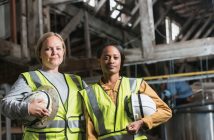In an effort to combat rising construction costs and lengthy project times, applying non-linear workflows would mean different stages of work could be done simultaneously
Andy Cunningham, Senior Regional Director Australia and New Zealand at Autodesk

Non-linear workflows have become part and parcel of the media industry given the nature of the sector. With work completed in segments, content can be created, edited and post-produced in parts throughout the lifetime of the project.
Replicating this type of process in the engineering and construction realm is dependent on various elements. Traditionally, complexities underscoring construction contracts and the liabilities that come with those often inhibited that sort of mesh.
If we look at fidelity, concept and detail design conducted by an architect is passed onto engineering, which is then forced to remodel, and once it reaches construction, there’s often a need for revision to bring a building to life. Liability increases as it moves through the chain.
Consider the apartment blocks in the Sydney suburb of Mascot which were reported to have flaws – an unclear workflow culminated in major issues for those towers.
But it’s certainly not impossible to converge non-linear practices across specific stages of engineering and construction.
For example, there is opportunity to blend transition points to create more efficiency, helping overcome data loss and preventing rework, symptoms that result in project timelines and costs blowing out. We see that happening in highway projects where the work is segmented into sections that run simultaneously.
There are, however, still questions – and uncertainties – around whether breaking up projects can be done non-consequentially. The reality is you can’t easily reconstruct the last seven kilometres of a highway like you can reshoot a few scenes of a film.
Technology advancements are making things easier, though. Using the industrial metaverse, for example, allows engineering and construction companies to quickly and efficiently modify designs at any phase before a build commences.
Projects are no longer just visualised through CAD, but can be ‘experienced’ to completion before building even starts. Combined with a foundation created through building information management (BIM) and ever-expanding digital twin capabilities, far more variables can be analysed for effectiveness, and issues ironed so that once it’s time to get the tools out, the work is optimised.
Ultimately, it’s crucial nothing in construction happens in isolation. Information and collaboration can’t be siloed, and project teams must remain connected with constant access to critical project documentation and data.
Breaking down barriers between the various stages of a build not only reduces time and costs, but fosters assurances through visibility so nothing needs to be pulled apart after physical materials are put together.








